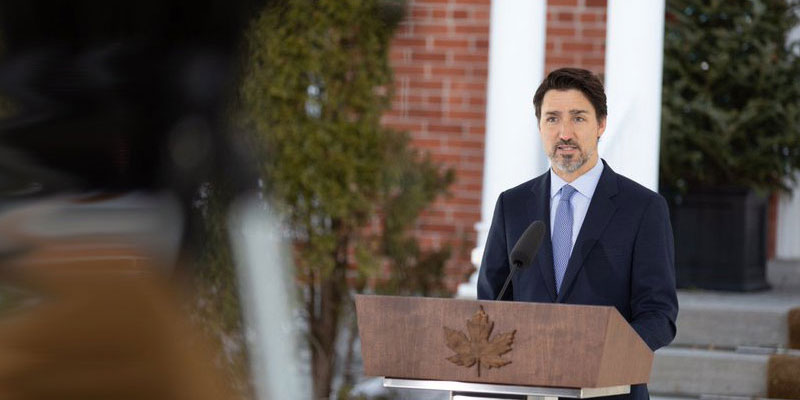Climate targets will make things worse for humanity

At the climate summit in Glasgow, Prime Minister Trudeau promised to ensure that Canada achieves its promises under the Paris Agreement, including a pledge to reach net-zero greenhouse gas emissions by 2050. Yet even though the media often takes these goals as self-evidently desirable, the mainstream literature shows they would cause far more harm than good.
For example, the 2018 Nobel Prize-winning model of William Nordhaus shows that the rapid drop in emissions necessary for the Paris target would cause so much economic damage it would be better for humanity to do nothing at all about climate change.
Specifically, in the latest (2016) version of his “DICE” model, Nordhaus first estimates the baseline of economic growth and climate change damages if governments around the world continue “business as usual.” Then Nordhaus considers different government climate policies and compares them to this no-policy baseline.
For example, if governments implement Nordhaus’ preferred “optimal carbon tax” (which rises from roughly US$35 per tonne in 2020 to US$100 per tonne in 2050) he estimates it would be very beneficial to humanity. The math is quite simple. According to the Nordhaus model, through to 2100, the optimal carbon tax reduces climate change damages (relative to the no-controls baseline) by about $50 trillion—but would also reduce economic output (relative to the baseline) by about $20 trillion. On net, therefore, Nordhaus estimates that a textbook-optimized carbon tax would make humanity about $30 trillion richer (the difference between $50 trillion and $20 trillion) compared to the no-controls baseline.
But it’s crucial to emphasize that even Nordhaus’ “optimal” carbon tax comes at a cost. After all, humanity currently relies so heavily on fossil fuels because they’re a very convenient way to deliver dense amounts of energy, useful in both electricity generation and transportation. By imposing an additional rule on industry—namely, that emissions must fall dramatically in coming years—governments take away options and make the economy grow more slowly than it otherwise would.
Interestingly, under Nordhaus’ recommended carbon tax, the Earth warms 3.5 degrees Celsius by 2100, far higher than the Paris ceiling. So what happens if governments enact a more stringent policy?
Nordhaus also answers that question. He looked at a scenario where governments do not allow global warming to exceed 2.5 degrees (note that this target is weaker than the Paris goal). In this scenario, emissions must fall rapidly, reaching zero by 2040. For this policy objective, the model estimates a much greater reduction in climate change damages—a whopping $91 trillion lower than the baseline.
But what about the cost? The Nordhaus model estimates that because these stringent emission cuts would be so damaging to growth, the harm to the economy would be $134 trillion higher than under the no-controls baseline. Thus, even though the stringent emission cuts needed to hit the 2.5-degree target would help avoid more climate change damage, on net the policy would make humanity $43 trillion poorer (the difference between $134 trillion and $91 trillion) relative to the no-controls baseline.
To be sure, economic models omit many important factors. But the public should know that the temperature and emission goals emanating from the Paris Agreement and recent climate conference are nowhere near justified in the standard literature. According to William Nordhaus’ 2018 Nobel Prize-winning model, these targets would be worse for humanity than doing nothing at all about climate change.
Author:
Subscribe to the Fraser Institute
Get the latest news from the Fraser Institute on the latest research studies, news and events.

